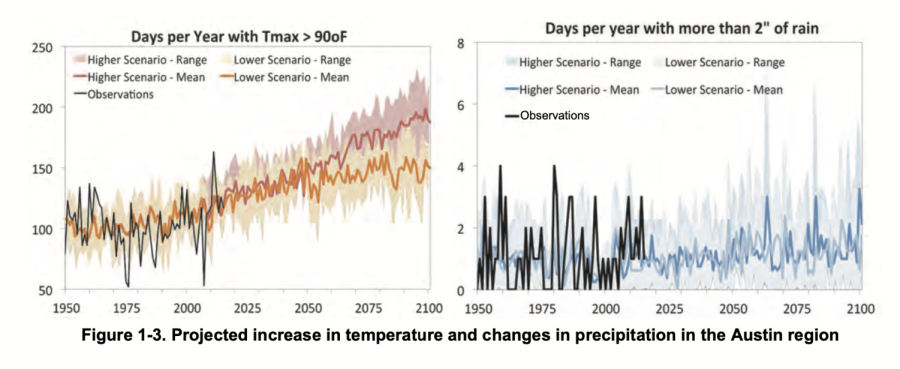Jackson School of Geosciences partners with City of Austin to strategize future of Austin’s water supply
January 30, 2023
The City of Austin partnered with the Jackson School of Geosciences to explore the future of Texas’ water and aid in the city’s battle against future droughts.
Led by geological science professor Zong-Liang Yang, the research team received $150 thousand from the city for this project. The researchers plan to complete and present their findings this summer, and their recommendations will be implemented by 2024.
“We have a new understanding of climate change,” Yang said. “That’s why the city of Austin wanted to work with UT — (to incorporate) the best science into this waterplan.”
Geology graduate student Sabiha Tabassum took on most of the data analysis, Yang said, as she studied 40 global climate models and downscaled them into usable data, looking for the one that most closely replicated Austin’s climate situation.
Tabassum looked at the different models, each dependent on either a reduction or an increase in greenhouse gasses emissions. She said the research revealed a future increase in dry days, followed by sudden and intense rainfall.
“Even if we have very bad greenhouse gas emission and very bad consequences, the city should be prepared to deal with that,” Tabassum said.
Yang and Tabassum plan to meet with the city of Austin every two weeks to compare global-scale climate models and the newly downscaled framework. Austin Water engineer Helen Gerlach said this is part of the city’s 100 year Water Forward plan.
“(This partnership) gave us an opportunity to work with someone in the community that we’re planning for,” Gerlach said. “It gave us access to a whole bunch of academic expertise that we might not have access to otherwise.”
Researcher Dev Niyogi said without proper planning, water will become less available in the near future in Austin.
“(We assume) that you open the tap and water keeps flowing … in somewhat near perpetuity,” geology professor Niyogi said. “This means we have to understand and plan for these resources.”
Niyogi and Yang said Austin’s rapidly growing population — which is predicted to double by 2050 — means the city is consuming more water. Therefore, as demand for water increases, the supply of water decreases.
“How do we manage water resources, and this population doubling, and also limited water supply in the future because of droughts?” Yang said. “That’s the big question.”















